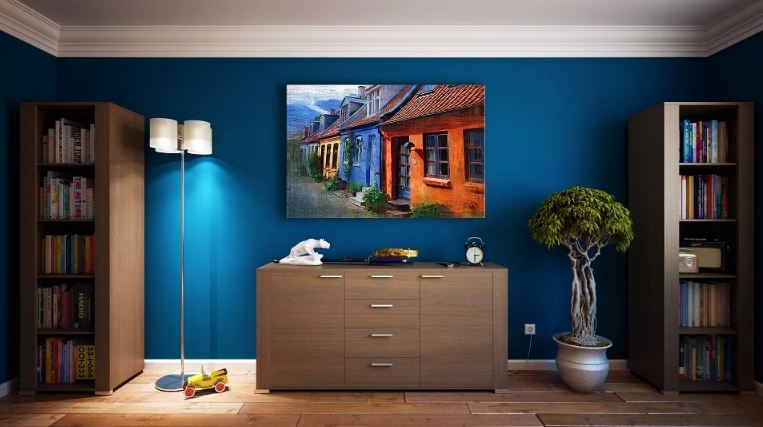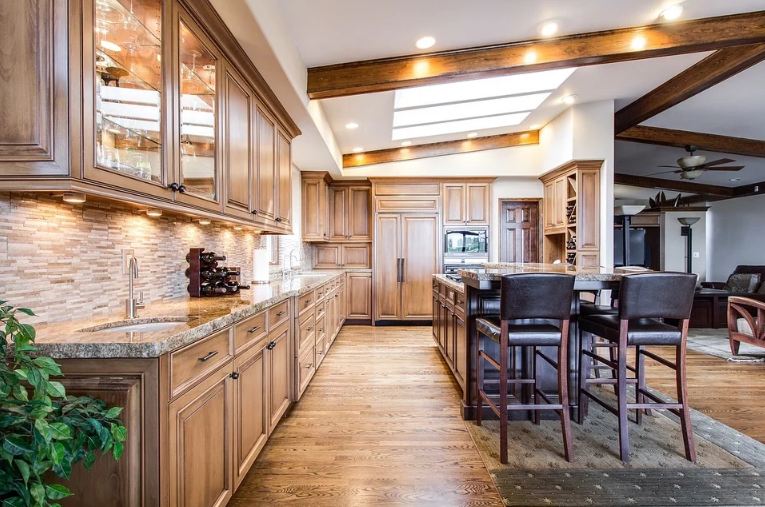Hybrid means something that has characteristics of two different things. In other words, we can say that it is a combination of two. Hybrids of plants, fruits, cars, clothes, and whatnot already exist. In recent days, the technique called hybridization is being introduced in the interior design industry. Although the concept of mixing two different styles is not new, calling it hybrid decorating is certainly quite recent.
Hybrid Decorating
Hybrid decorating is the mixing of two different styles of decorating and aesthetics to create a brand-new style and aesthetic that is the amalgamation of the previous counterparts. A new aesthetic is born this way, which encapsulates the features of its constituents.
Why Is Hybrid Decorating Better?
In the ever-evolving world of décor, it can get rather boring to stick to only one aesthetic. You wake up every morning to see the same old bohemian style room you have had for a year. You think you need to add something new to the room. You go out and see a new rug, but you cannot have it in your place because the Scandinavian aesthetic gives off an entirely different vibe than the bohemian style of your room. So, you have to choose a rug that matches the present aesthetic of your home. Now you can see how this can be redundant and repetitive.
People can lose the motivation to get up and be productive if their place isn’t well maintained. Thus, wanting to have new décor every once in a while is a logical response. But this process is unnecessarily hassled due to wanting to fit into a single aesthetic.
Whereas having multiple pieces that belong to different styles may end up looking all over the place. For instance, a black loveseat, a glam mirror with gold accents, an eclectic wall clock, and a wooden coffee table are lovely pieces on their own, but putting them in one room and expecting the place to look “well” decorated is an overstatement.
While getting a new piece of décor, the choices are very limited if you only have one aesthetic. But the options are endless when you consider all of them at the same time. This is where hybrid decorating comes in to help you out. As said before, since hybrid means something having binary characteristics, the plan of action now would be to select two aesthetics you like and choosing your décor according to them. In this way, the monotony of having a single style and the havoc of being all over the place can be eliminated.
Streamlined Process
Decorating in a hybrid way can streamline the process of decorating for you. Since there are two aesthetics, there are just the right amount of choices. You aren’t hurdled with the limitation of one style or overwhelmed by the options due to multiple styles. Your interior would be looking more put together and streamlined in no time with this method.
Different Hybrid Styles
We can see why hybrid decorating is a better way of decorating as it can help keep things organized and streamlined; now we see new styles that can be formulated by combining different styles that are already present. Choosing two different aesthetics with some similar elements that overlap with the other one is the best way to start. In this manner, the decorated place looks its best.
An alternative method is to look for contrast and juxtaposition in the styles. As the saying goes, “opposites attract,” thus, having opposite styles can also work in wondrous ways.
Mid-Century Modern + Art Deco
Mid-century modern, a style that is more organic and understated, incorporates polished and brushed pieces. Art deco is based around luxurious items and lavish ornaments. In this hybrid style, the culmination of these two styles in one leads to a place that is refined and looks very symmetrical. Mid-Century Modern mostly uses hues such as deep greens, mustards, and oranges, while Art Deco attributes to the use of regal shades like emerald green and peacock blue. Both styles result in a beautiful palette of colors.
Goth + Greenhouse
The Goth aesthetic is dark and moody. At the same time, a greenhouse aesthetic is lively with greenery everywhere. Combining the two results in a juxtaposition of brooding blacks with a punch of green that screams alive. This hybrid style works great because the colors are opposite, and the contrast between them helps to elevate and amplify the elements of each style.
Boho + Eclectic
Boho style is somewhat vague, although many associate its layered tapestries withthe use of jute and abundant plant life. The style comprises elements such as being full of life and culture.For a fresh spin on bohemian decor, adding eclectic elements to the picture can be a good step. Pop of colors and bold statement pieces will help to support the carefree nature of the bohemian style and accentuate the living space even further.
Japanese + Scandinavian
Japanese and Scandinavian styles of décor are both focused on using natural material (wood) and natural light. The differences are that the Japanese style focuses on earthy and richer tones, whereas the other mainly prefers lighter, muted, and pastel tones. Keeping in mind these differences, one can make an adequate living space. This style is very trendy because of its minimalist features. Called as Japandi, it can be implemented by carefully curating the main features of the aesthetic that are the use of wood in furniture and then adding the colors.
Industrial + Rustic
An industrial aesthetic, as the name suggests, is inspired by components of industries. It comprises elements such as hardware in décor and stripped-down bareback walls such as red brick. Adding rustic pieces that are inspired by the rural world and include wooden furniture, to the equation creates a juxtaposition of urban and rural elements, which ends up looking updated and modern. This combination is very popular among youth nowadays.
Functionality with Aesthetics
Hybrid décor can be described in two ways. One is the hybridization of different styles together, which is what we have explained above. The other is the hybridization of functionality and with the décor. Such hybrid items can be more practical since they are usually designed to have more than one function.
A typical example of such hybrid furniture is a couch that also has space for storage. Thus, it doubles as a place for sitting and even a storage unit. Other examples are a mirror with a storage unit behind it and a sofa that also doubles as a bed. These items prove to be cost-efficient, as you don’t need to buy multiple pieces of furniture for different functions. These hybrid pieces are also better in a way because the décor has a purpose instead of just looking good and taking up space.
Conclusion
You may think that sticking to only two aesthetics is more demanding than having one. Of course, following the hybrid decorating is pretty challenging, but it results in a place that looks more put together and attractive. That is the result you are looking for when we decide to decorate your home.


